Cesária Évora
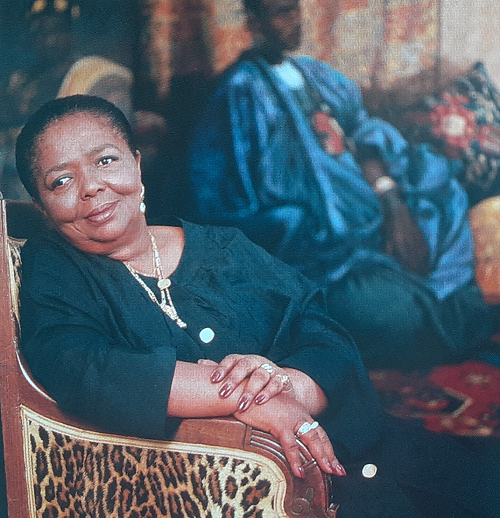
Cesária Joana Évora
Mindelo, São Vicente, 1941 – Mindelo, São Vicente, 2011
Singer
First Cape Verdean to become an international celebrity, Cesária Évora put Cape Verde in the map, in the turn of the 20th to the 21st century. In a time that the media phenomena depend mostly on the image rather than music, the singer from Mindelo, far from fitting in the aesthetic standards of the time, answered with monosyllables in interviews, showed up on stage almost monolithic, alienated from notions on body expressions and no effort to communicate with the public. But she did entice crowds in every country she visited. For her beautiful voice and also her charism that was hard to define, maybe because of the spontaneity of her singing, which was somewhat distracted, with no emphasis or big flights. “Her quiet way of being and domineering” on stage, wrote in the newspaper Voz di Povo (January 19th, 1987) the chronicler Pedro Delgado.
And that was her way of singing, at the bars and the radio in Sao Vicente, in the first chapter of her Cinderela story. That becomes clear in the compilation that reunites her first recordings Rádio Mindelo – Early Recordings.
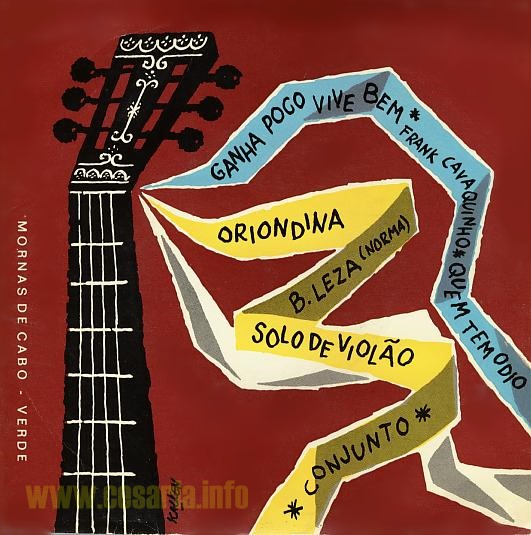
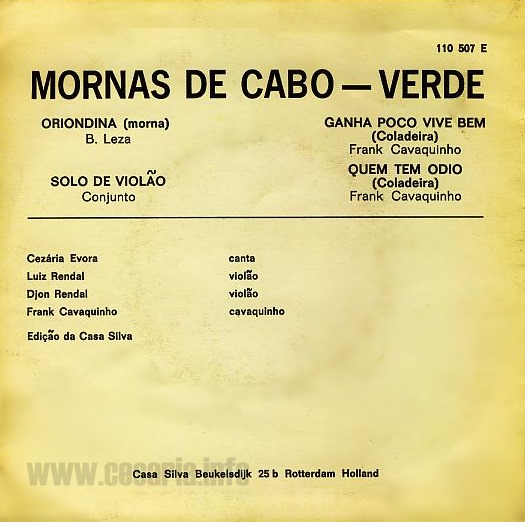
Cesária grew up in a time where the social apartheid prohibited the bare feet like her to go up to the pavement of Mindelo’s main square, reserved for wealthy families. At 7 years old she lost her father, Djute, that played violin. It was a time of great difficulties in the archipelago because of permanent droughts. Her mother leaves her in the care of nuns and, later, of a family with more resources. At around 13 years old Cesária frees herself and enters adulthood wandering around the city, singing in bars frequented by passing sailors and local bohemians. Who first noticed her voice was Eduardo Jon Xalino, who later emigrated to Holland and was Cesaria’s boyfriend. “One day I was singing, and she followed my voice. I told her that she had a beautiful voice and she answered that she didn’t like jokes, that she only sang when she ironed, as a distraction…” told Xalino, 50 years later. The musician guaranteed that he wasn’t joking, that her voice was truly beautiful and asked if she wanted a drink. “She asked for a pontchinho, took a sip, closed her eyes and sang…”.
The first time that her name was shown in a newspaper was in 1965. “Cesária is genuine, a woman with perfect breasts and wavy hips just like the sea playing at the beach, she will come to our table asking to let her drink from your cup, singing just for you the departure of Toi da Djinha, that one day without telling anyone gave his name to work in the plantations and never came back”, wrote the chronicler Jorge Miranda Alfama in the newspaper O Arquipélago (April 1st, 1965). Around that time the singer used to perform at the radio, in private parties and bohemian nights in the city.
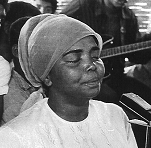
It was following recordings with Luís Rendall that, his son, Djon Rendall, and Frank Cavaquinho that, by Cavaquinho’s initiative were edited in Holland by Casa Silva (later Morabeza Records) the first two records with Cesária’s voice in it, in 1965. In 1968, a new record was edited where Cesária sings with Jack Monteiro accompanied by the Mindelo Group.
The two interpreters are presented as “promising vocalists from the Cape Verdean constellation” on the cover of the record titled Segredo de um coração. Follows another EP with the same interpreters, titled Melodia caboverdiana.
By the early 1970s, Cesária stop performing in public for 12 years. In 1983, she reappeared and in an interview with Leão Lopes she justified her absence “I was home all that time, because it distressed me singing and recording so much, without taking any advantage of that. I was exploited and never had the luck to face music as a possible future. Because of this I closed myself at home with no pleasure of going out.” (Ponto & Vírgula, August/September 1983).
Cesária returns to the musical nights of São Vicente. She kept not taking any advantage of her performances, she sang for a few whiskey glasses, overindulged in drink but was admired in Cape Verde. In 1985, during the 10th year celebrations of the independence, she was invited to participate in a female voices’ festival organized by Organização das Mulheres Cabo-Verdianas (OMCV), which resulted in the recording of the LP Mar azul abri’m camim Cantá mudjer’s, with three other singers.
In the next year, Bana proposes recording a album: Cesária, edited in 1987. It is around this time that appears Djô da Silva who will lead the team of architects of the singer’s worldwide success. Son of Cape Verdeans, raised in Senegal and residing in Paris, Djô da Silva has been producing some musical works. He proposed to her that they worked together and in 1988 directed the LP La Diva aux pieds nus, with arrangements of Manu Lima in half of the tracks and Paulino Vieira in the other half. The following record, Destino de Belita (1990), shows the crioulo interest in zouk and everything that allows you to dance, with electrical arrangements, but with no success. Cape Verdean did go to the balls to dance but did not buy enough records.
It is around this time that the French started contributing to build the Mindelo’s diva image and transformed her into a celebrity and a sales phenomenon. It is the era where several international pop and rock artists turn to acoustic and that the label world music, encompassing the pop music exterior to the Anglo-American context, starts to spread. Djô da Silva proposed to Mélodie, which was the first label to work with African music in France at that time, the distribution of Destino de Belita. But the record didn’t convince François Post, working at the label at that time, and in Lusafrica later. However, the French producer enjoys the acoustic songs.
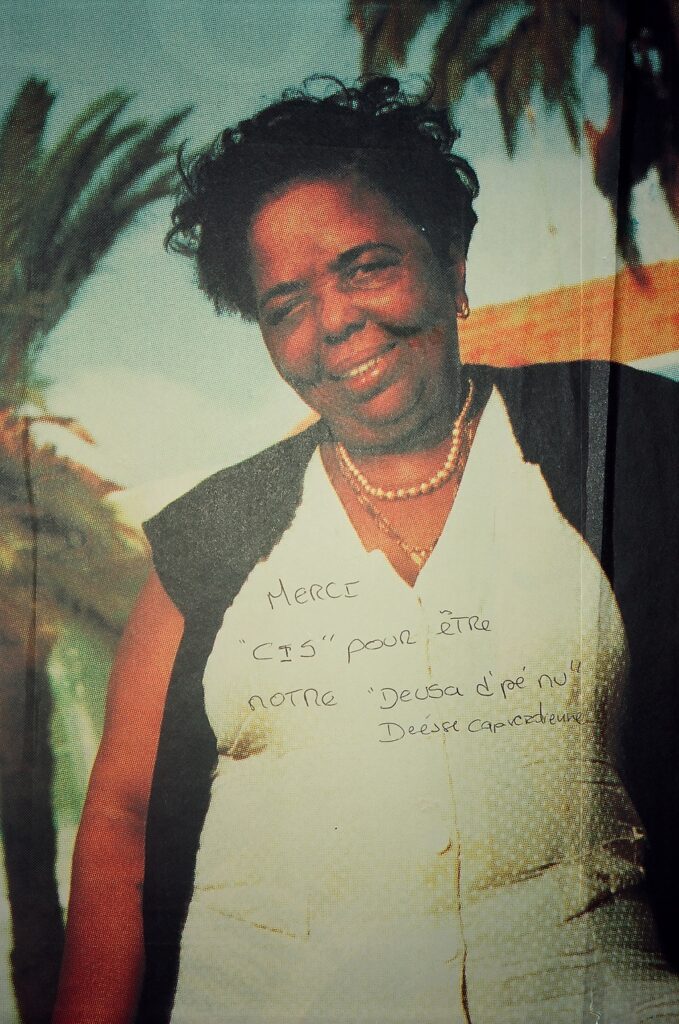
There was also the question of how to sell Cesária’s image. While visiting São Vicente in 1991, Post finds out how to do it. Deep down, just like she is: 50-year-old crioula, in a house falling apart, like many others, but endowed with a rare voice, in an environment of cavaquinhos and guitars that carry old times, next to Mindelo’s bay.
This charming poverty seduces the French press and, through a videoclip, starts drawing public attention to Mar azul, album recorded in that year, accompanied by Mindel Band, group that was only formed to record this album. This album is a milestone in the singer’s career, not because of the sales but because of the choice of a fully acoustic album.
Djô da Silva proved that this was the right path in the Angoulême festival in 1991, the first that Cesária is a part of, with a show that starts electric and ends acoustic. Incognito among journalists, the producer observes the comments regarding the second part of the show and the coldness of the spectators during the first part of the concert.
Neither diva nor queen. Cize sings naturally like a whisper on the riverside denounces the abundant waters. When she speaks, it’s like she comes from a soap opera by Nho Roque. She is efficient, rejects the dreams made to amuse the consumer of images (…) whoever understands, she didn’t come to pretend.
Corsino Tolentino, in A Semana 3.29.1993
The following album, Miss perfumado (1992) sells 120 thousand copies in a few months, in France. On the cover, the image carefully built, but that possibly is the closest to her authenticity: stripped, bare feet, simple, enigmatic. An album practically recorded by two musicians – the versatile Paulino and Toy Vieira, alternating on the strings and the piano –, to whom are added Escabech (reco-reco) and Malaquias Costa, on the violin in one only theme, the unforgettable “Angola”, by Ramiro Mendes, that will lift audiences in every room.
Thereafter the covers of her albums show her in a star pose. Jewelry, dresses, hairstyles, make up the image of success that year after year will be fed at the expense of world tours that keep her on the road most of the time. Her support band after Paulino Vieira left, changes to a formation led by Bau, and later by Nando Andrade.
Cesária Évora’s discography is privileged vehicle to the spread and dissemination of the production of composers of different generations, but Manuel d’Novas, B.Léza, Ti Goy e Teófilo Chantre, were the most recorded.
Cize’s funeral, like she was affectionately named by friends and fans, in December of 2011, had state honors, and the international airport of São Vicente Island, was named after her a few months after.
Several works were published having Cesária Évora as theme (see below).
When she was still alive, the French journalist Veronique Mortaigne published Cesária Évora, la voix du Cap Vert, Vasco Martins and Tchalé Figueira honored her in a book published in 2015 and the Polish writer Elżbieta Sieradzińska published her work on Cize in 2021.
When it comes to movies, there are two documentaries on the singer: Cesária, nha sentimento (2012), by Sofia Leite, and Cesária Évora (2022) by Ana Sofia Fonseca.
Discography
- Participation in two EP titled Mornas de Cabo Verde, EP, Casa Silva, Rotterdam, 1965. With Luís Rendall, Djon Rendall e Frank Cavaquinho.
- Participation in two EP of Conjunto Mindelo Segredo de um coração and Melodia caboverdiana, Casa Mimosa, SV, [1968].
- Participation in LP Mar azul abri’m camim – Cantá mudjer’s, Ovação, Lisboa, 1985.
- Cesária, LP, Discos Mindelo, Lisbon, 1987.
- La diva aux pieds nus, LP, Lusafrica, Paris, 1988. Reedited in CD as Musique du Cap-Vert (Buda Records, 1989).
- Distino di Belita, LP, Lusafrica, Paris, 1990. A pirated edition in CD is launched in the U.S.A titled Nova Sintra (West Wind Latina, 1998).
- Mar azul, CD, Lusafrica, Paris, 1991.
- Miss perfumado, CD, Lusafrica, Paris, 1992.
- Sodade (compilation), CD, Lusafrica, Paris, 1994.
- Cesária, CD, Lusafrica, Paris, 1995.
- Cesária a l’Olympia, CD, Lusafrica, Paris, 1996.
- Cabo Verde, CD, Lusafrica, Paris, 1997.
- Best of (compilation), CD, Lusafrica/BMG, Paris, 1998.
- Cesária Évora remixes, CD, Lusafrica, Paris, 1999.
- Café Atlântico, CD, Lusafrica, Paris, 1999.
- São Vicente di longe, CD, Lusafrica, Paris, 2001.
- Voz d’amor, CD, Lusafrica, Paris, 2003.
- Rogamar, CD, Lusafrica, Paris, 2006.
- Rádio Mindelo – Early recordings, CD, Lusafrica, Paris, 2008.
- Nha sentimento, CD, Lusafrica, Paris, 2009.
- Cesária & … (duets), Lusafrica, Paris, 2010.
- Mãe carinhosa (posthumous), CD, Lusafrica, Paris, 2013.
Know more
- Cesária Évora, la voix du Cap Vert. by Véronique Mortaigne, Actes Sud, Paris, 1997. Biography, in French.
- Cesária – A rota da Lua vagabunda. Tchalê Figueira and Vasco Martins, edited by Associação da Orquestra Clássica do Centro, Coimbra, 2015.
- Cesária Évora. by Elzbieta Sieradzinka. Publisher: Rosa de Porcelana, Lisbon, 2021.
- Cesária, nha Sentimento, by Sofia Leite. Documentary. RTP/Lusafrica, 2012.
- Cesária Évora, documentary by Ana Sofia Fonseca. Documentary. Carrosel Produções, 2022.